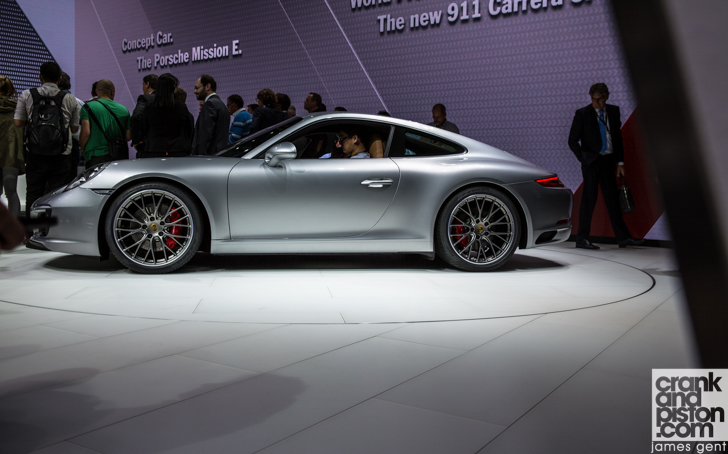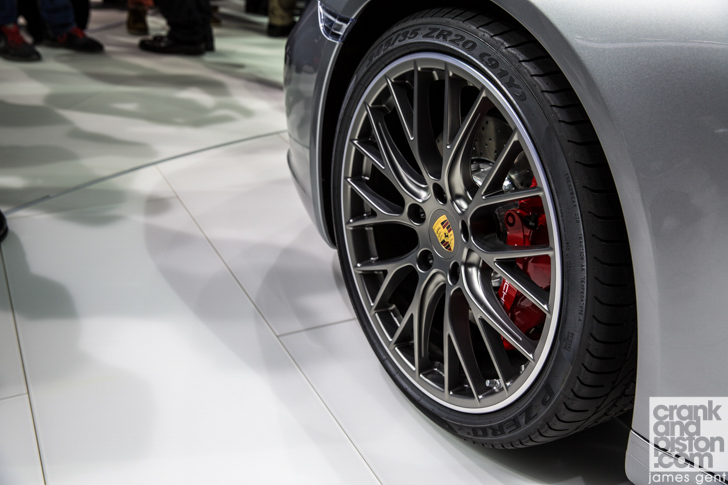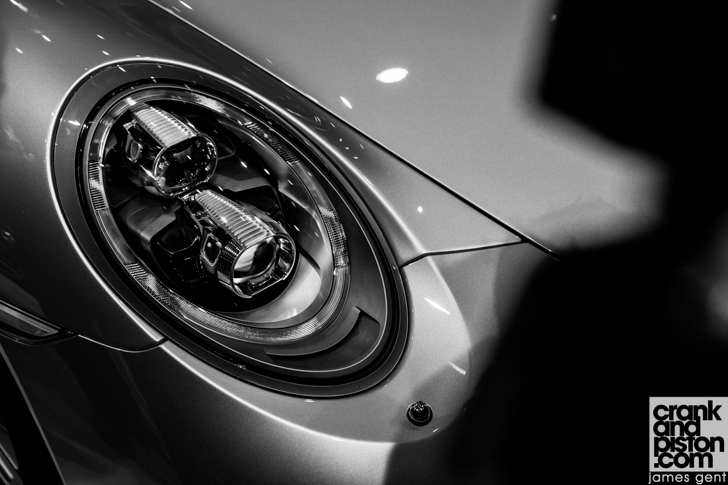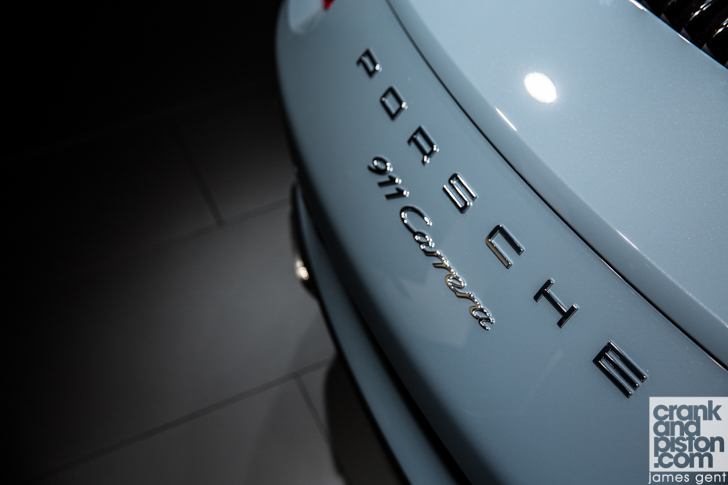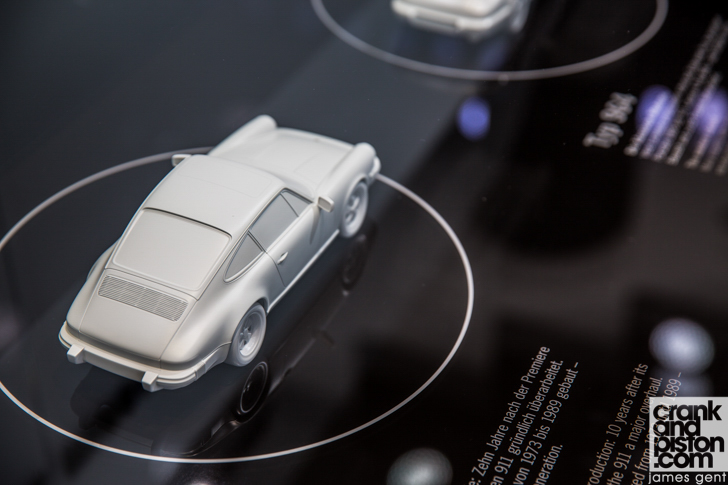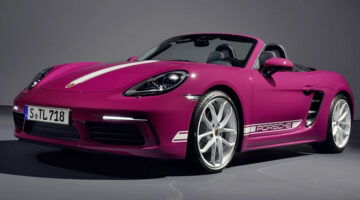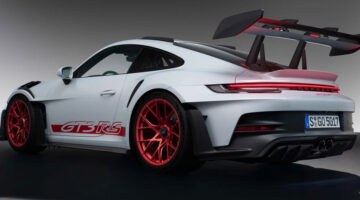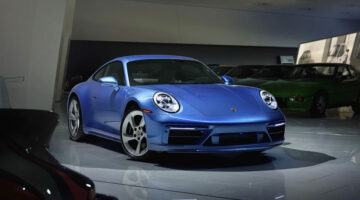In a controversial step, the Porsche 911 is stepping away from naturally-aspirated engines to a turbocharged flat-six. We speak with 911 boss Dr August Achleitner about the future of Porsche’s flagship model.
On the face of it, a face lifted model should not be attracting this much interest at the Frankfurt Motor Show. Okay, the show takes place practically in Porsche’s backyard – throw a well-aimed socket wrench and you’ll hit Weissach – and this is the ‘new’ 911 Carrera we’re talking about, still arguably THE benchmark sports car on the planet despite being 52 years old.
Aesthetically though, there’s little to get excited about. Aside from a wider rear-track and new wheels, subtly tweaked side louvres, an updated ‘Communication Management’ system, and a new steering wheel lifted from the 918, 991 C II is pretty much identical – at face value at least – to the model it replaces. Not that 34 pages of press material would have you believe that, of course: blah blah, “more intensive experience”, waffle waffle “emotional driving pleasure”, new engine generation, biturbo charging, PDK transmiss…
… wait, what…?
Yep. Purists be warned, from 2015 onwards the Porsche 911 Carrera will pack a 3-litre biturbo straight-six, just one of several factors designed to ‘broaden the spread’ between performance and day-to-day usability. And easily, the most controversial for Porsche’s ‘gene pool’.
“It’s no secret that we have to reduce both fuel consumption and emissions to fulfil our own legal requirements,” explains 911 boss Dr August Achleitner, with whom crankandpiston.com grabbed a few words in Frankfurt. “After several discussions, we knew we had to take the turbo route, and in doing so downsized from 3.8 to 3-litres.
“Simultaneously, nobody buys a 911 to get from A to B, so this car also has to be a lot of fun to drive. At Porsche, we all love our naturally aspirated engines, and we knew that they have to feel like a naturally aspirated engine. This was our priority during development.”
Sift through the marketing garble, and on paper at least, this does appear to be the case. The newly tuned PASM chassis for instance (available as standard on the Carrera for the first time) lowers the ride height by 10mm for improved stability under cornering, ditto the wider rear wheels and track. There’s a greater spread across the damper setup too, allowing for more ferocious turn-in speed without pulverising occupant spines to a fine jelly in the process. Throw in Porsche’s tweaked seven-speed PDK and the new Carrera S should handle as precisely as a Swiss-made Glycine.
“Nobody buys a 911 to get from A to B, so this car has to be a lot of fun to drive. This was our priority during development”
Then there’s the performance, of which the new engine generation packs a sizeable whallop (“3-litres is hardly a small engine!”) Power in the S is raised 20bhp – despite the downsized unit – to 414bhp, while torque jumps 44lb ft to 369lb ft. Not figures to halt the presses, granted, but still enough – combined with a lithe 1440kg kerb weight and a returned ECU – to hit 308kph and dip beneath the four-second 0-100kph time, a first for any Carrera.
“With two turbochargers, modified compressors and a new exhaust system, we have added 30kg to the Porsche, about 18kg of which is the engine itself. We also had to reinforce the gearbox quite a bit, use bigger disc brakes and wider tyres at the rear, so it all adds up. But if you remove the turbos and the intercoolers, the new engine would still be lighter than the old one. We’ve put a lot of work into this to make sure the car does exactly what we want and what the customer expects from a 911.”
I was wondering when we’d get to that. It wasn’t too long ago that many considered the new 488 GTB’s turbocharged V8 to be the death knell for ‘pure’ Ferrari charisma, and the prospect of a turbocharged Carrera has no doubt raised one or two hackles as well. For Porsche though, character – and particularly ‘emotion’ – is critical for any successful 911.
“Producing the ‘right sound’ was more difficult because a turbocharger destroys almost all of the gas vibrations within the exhaust system to the point that there’s almost no room left for sound. So we’ve installed a new sports exhaust system, which was inspired by the GT3. To create a true ‘Carrera’ exhaust sound we had to modify the silencer and this meant the two pipes could only fit down the middle. This wasn’t a styling decision: style in this case followed function. We also had to change the connection between engine to the air intake system, and use two sound symposers to ‘influence’ the sound without making it too artificial. There was no question: we had to get the sound right.”
“The new Porsche 991 dips beneath the four-second 0-100kph time, a first for any Carrera”
If ‘sound’ and ‘feel’ are two considerable bugbears, there is one rather weighty elephant in the room we haven’t discussed yet. Given an illustrious – and sometimes terrifying – history with turbocharged engines that dates back to 1974, what stops Porsche’s new 991 Carrera being ‘just another’ 911 Turbo? They even share, give or take a mod or two, the same chassis. So where, or indeed has, Porsche drawn the line?
“One is a ’Carrera’, and the other is a ‘Turbo’, explains Dr Achleitner. Simple as that? “Simple as that. Of course the new Carrera S is much faster and the gap to the Turbo is much smaller, but we don’t anticipate any problems. If you look at the air intake system for the intercoolers, the Turbo has a big hole in front of the rear axle where the airflow goes in and through to the intercoolers behind the rear wheels. The airflow on the Carrera comes from the grille above the engine compartment then into the intercoolers. This produces different pressure and means the Carrera and Turbo put their power down differently. They’re not the same car.
“Let me give you an example: the Macan S uses the same platform as an Audi Q5. But we have changed the platform to the extent that the Macan feels and drives like a Porsche: you wouldn’t drive the Macan and think it’s an Audi. It’s the same with the 911: whether driven by combustion, hybrid technologies or electric powertrains, it HAS to feel like a 911.”
“What stops Porsche’s new turbocharged 991 Carrera being ‘just another’ 911 Turbo?”
Ah, another interesting point. Compared with its predecessor, the new Carrera S guzzles just 7.7 litres of fuel every 100km (the Carrera a slightly more frugal 7.4l/100km), a significant 12 per cent drop about which Porsche has been far from quiet. And it does beg the question: with focus on fuel efficiency, a Hybrid range already on offer and with the newly unveiled Mission-E grabbing headlines, could a hybrid 911 be that far away? Is a turbocharged Carrera just the tip of a less-rapidly-melting iceberg?
“We are always very careful with the 911: we don’t want to destroy this icon. So development is always an evolution, not a revolution. Saying that, hybrid technology is very important for Porsche: on the one hand we can reduce fuel consumption, on the other we can raise performance to a whole new level, like with the 918 [Spyder]. Around 10, maybe 15 years ago, Porsche moved from air-cooling to water-cooling, and now we’ve moved from naturally aspirated engines to turbochargers. Maybe the next step could be a hybrid engine. Why not?
“And to be honest, I’m less concerned than I used to be. Last year I went to two World Endurance Championships to see fans’ reactions to the 919 Hybrid. And it was unbelievable. The 919 has so much electric power that it marks a completely new direction, and this is expected by our fans. Step-by-step this new technology will come into the regular cars, and I am confident it will be accepted. But we will not offer an electric 911 if it is ‘just’ everyday transport. That’s not what the 911 has ever been about.”
Technical specifications available on page 2

